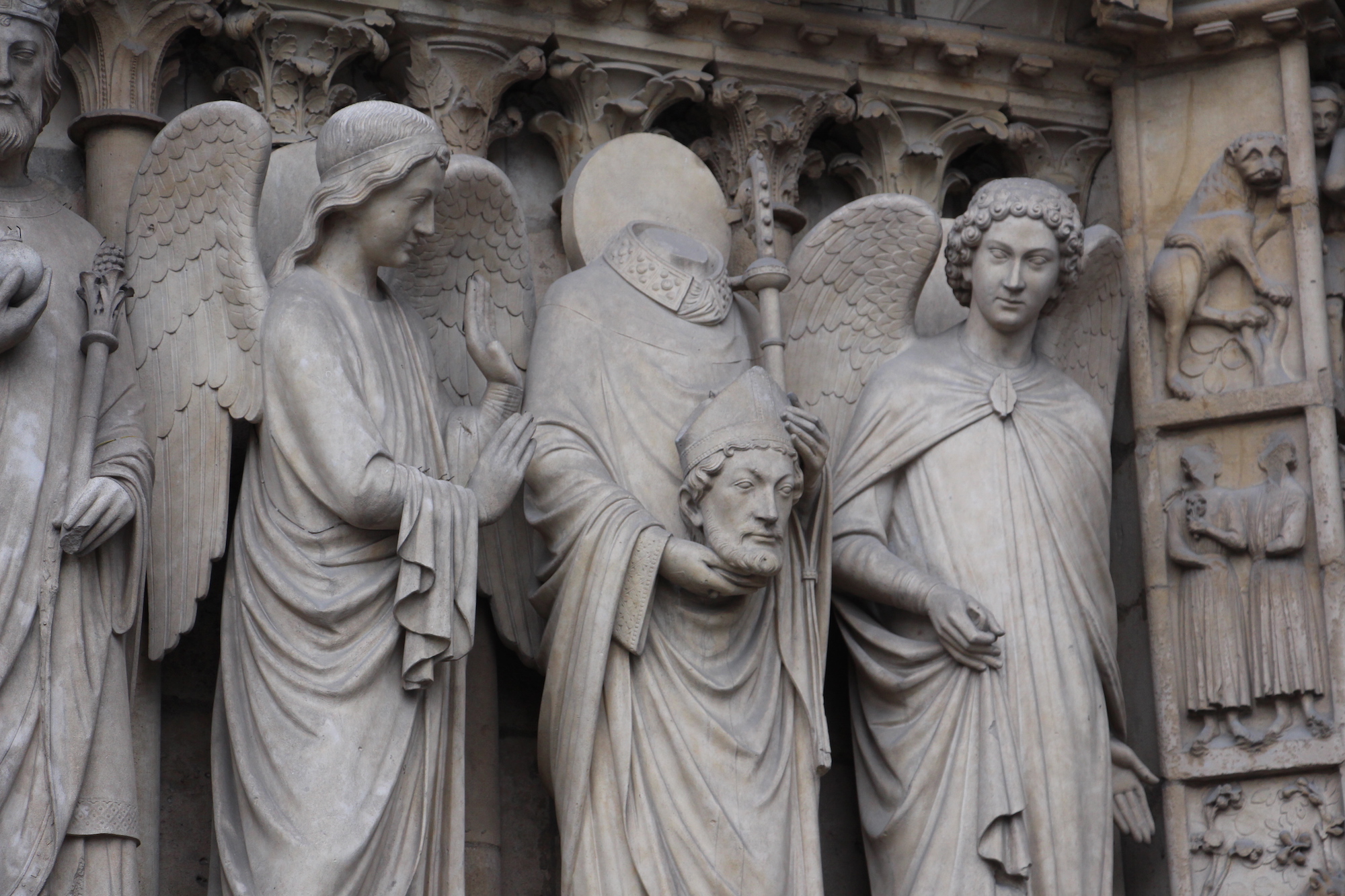1. On the front of Notre Dame Cathedral, standing to the left of the leftmost entrance, is a statue of a man holding his own head. This is Saint Denis, one of the patron saints of Paris. In the 3rd century AD, Denis was sent to the then-pagan city as its first bishop. When discovered, he was martyred by beheading at the top of the highest point of Paris: Montmartre. He then picked up his own head and carried it several kilometers to what is now the city of Saint-Denis, gave his head to a Christian woman, lay down in a field, and died. Every depiction of Saint Denis shows him holding his head, with the exception of one statue within Notre-Dame Cathedral.
2. In the center of the same entrance to the cathedral is a bas relief of the Genesis story of Adam and Eve, with one major change to the version we learned at Sunday school: the snake in the tree has a woman’s torso. This comes from an earlier version of the story, in which Adam had a first wife called Lilith, who was created at the same time and from the same dirt as Adam. She refused to become subservient to Adam and was replaced by Eve, made of Adam’s rib. Here, the snake is an allegory for Lilith, who tempts the couple with the fruit of the Tree of Knowledge. You won’t see this story in any canonical versions of the Bible today, but it was very popular during the Middle Ages, when the cathedral was built.
3. During the French Revolution, the cathedral was repeatedly ransacked: this Gallery of Kings over the entrances was completely destroyed, the statues beheaded by overzealous revolutionaries who believed them to be Kings of France instead of Kings of the Old Testament. In the 19th century, the cathedral was renovated by a prominent Neo-Gothic architect called Eugène Viollet-le-Duc, who removed the headless statues and replaced them with new versions.
4. Viollet-le-Duc attitude towards the renovation was to restore the old cathedral rather than make any changes of his own, with one exception: the spire. Historically, it is assumed that there was a spire on the cathedral, but by the time Viollet-le-Duc took on the project, there were no real traces of it. He made his own version of metal and wood, and he surrounded it with sixteen statues: the twelve apostles and the four evangelists. The statue that you can see in this picture to the right of the spire appears to be shielding his eyes: this is Saint Thomas, the cynic or the doubter. He is wearing Viollet-le-Duc’s face, to show how unsure Viollet-le-Duc was about his addition to the Gothic masterpiece.
5. Viollet-le-Duc did make one more addition that wasn’t entirely kosher. His restoration, largely influenced by the depiction of the cathedral in Victor Hugo’s Notre-Dame de Paris (aka The Hunchback of Notre Dame) included adding back dozens of gargoyles that had fallen into disrepair. This one, however, doesn’t look like a gargoyle at all, but rather a screaming woman. This, it is said, is Viollet-le-Duc’s mother-in-law.





1 thought on “Monday Postcard from Notre Dame Cathedral, Paris”
Comments are closed.